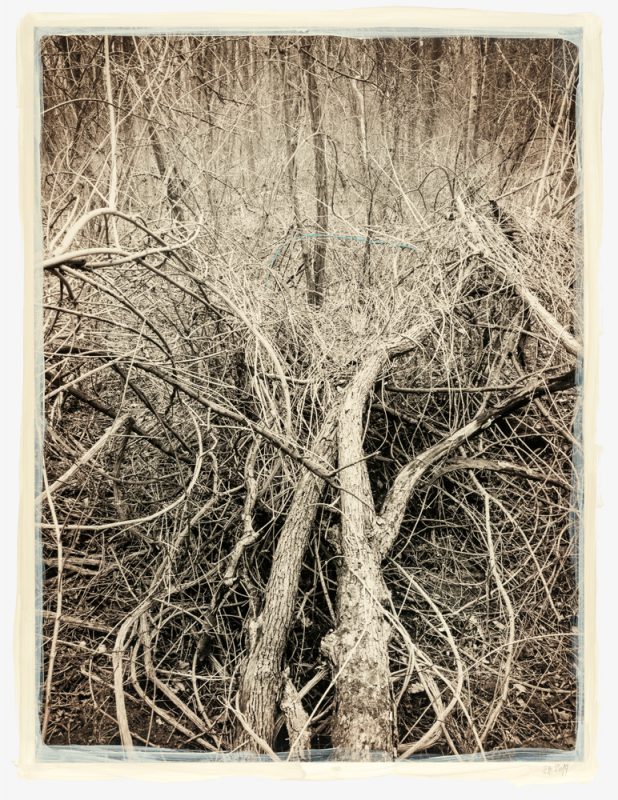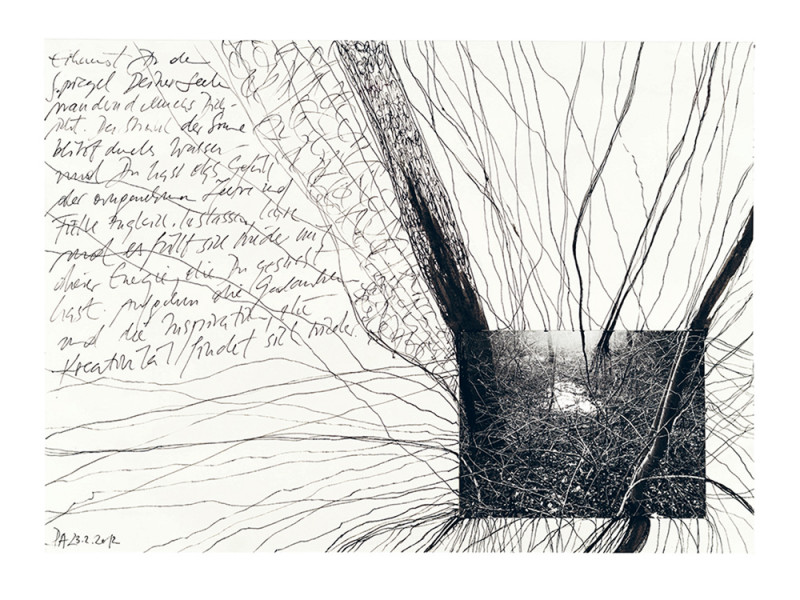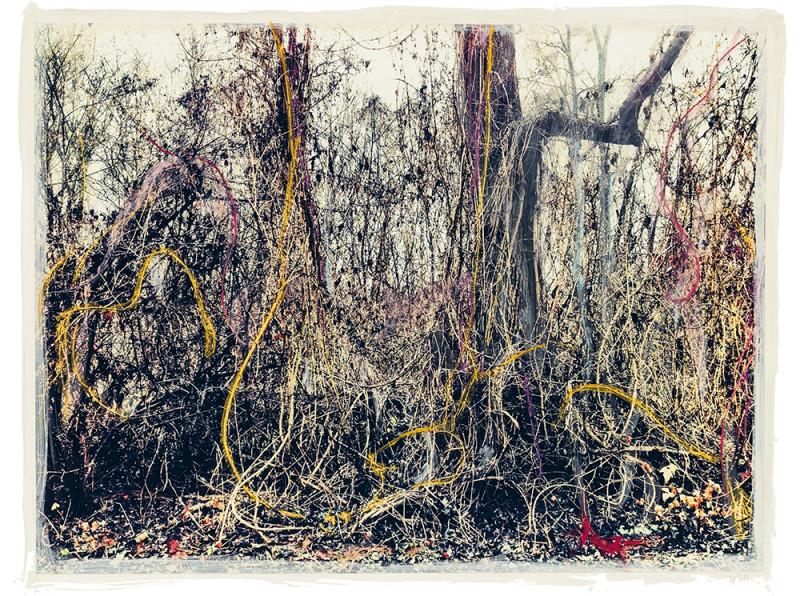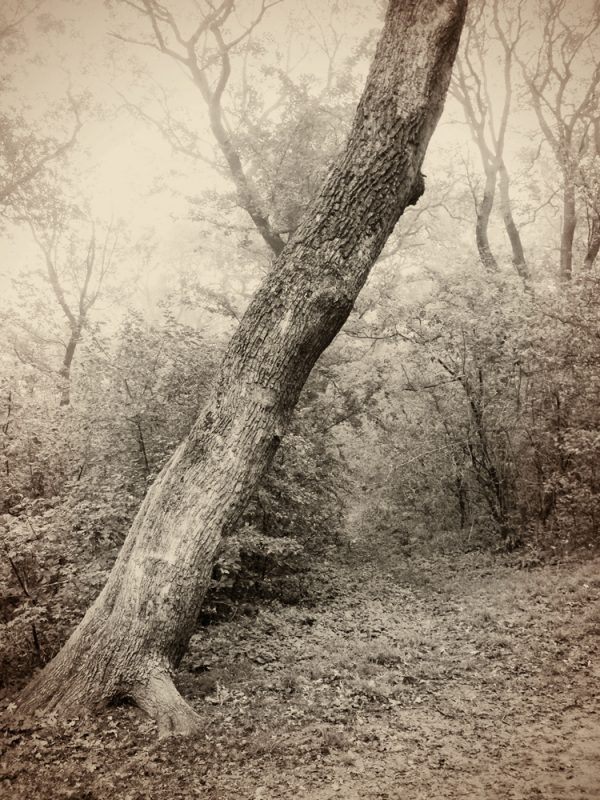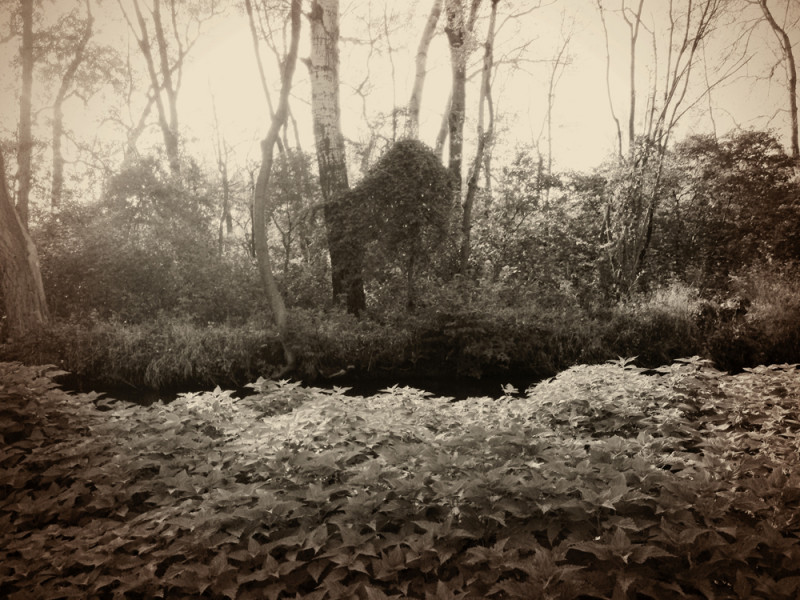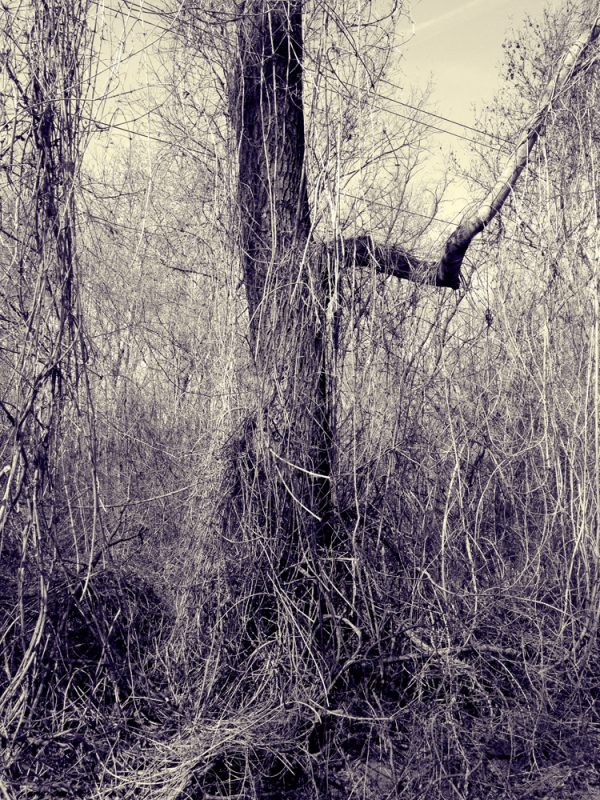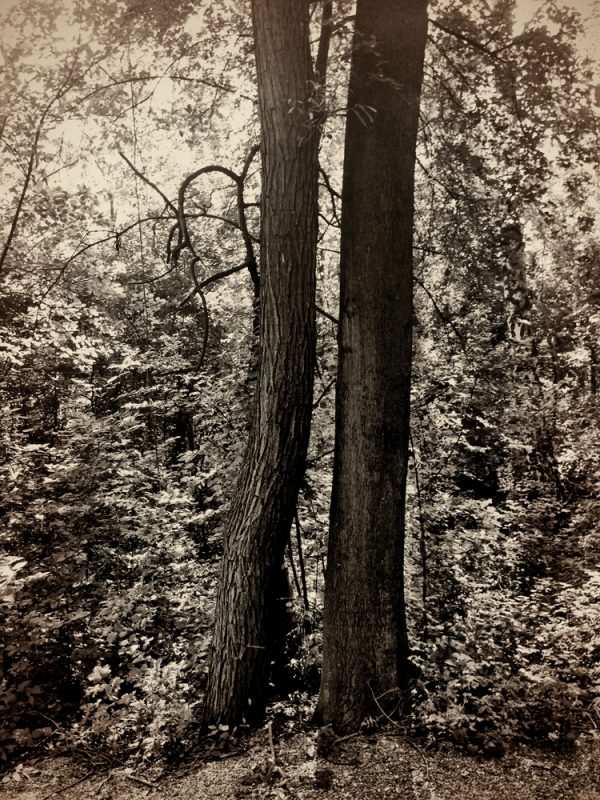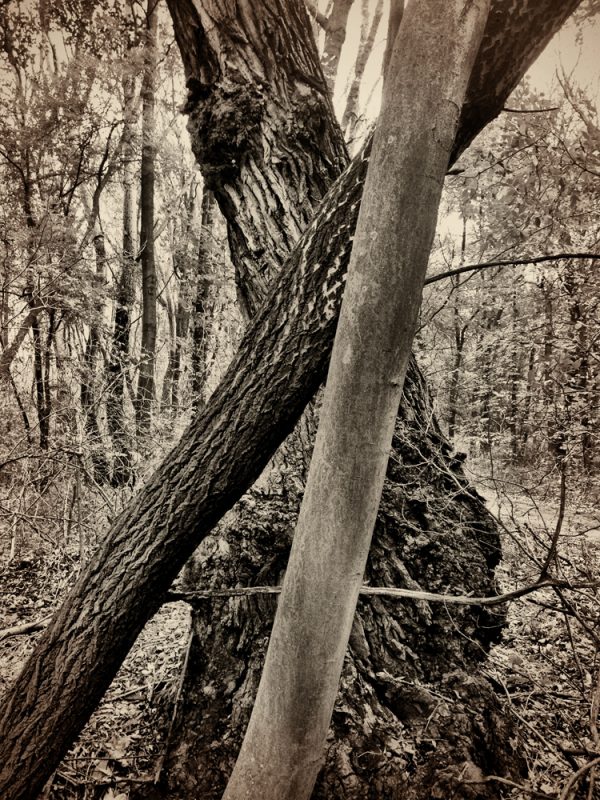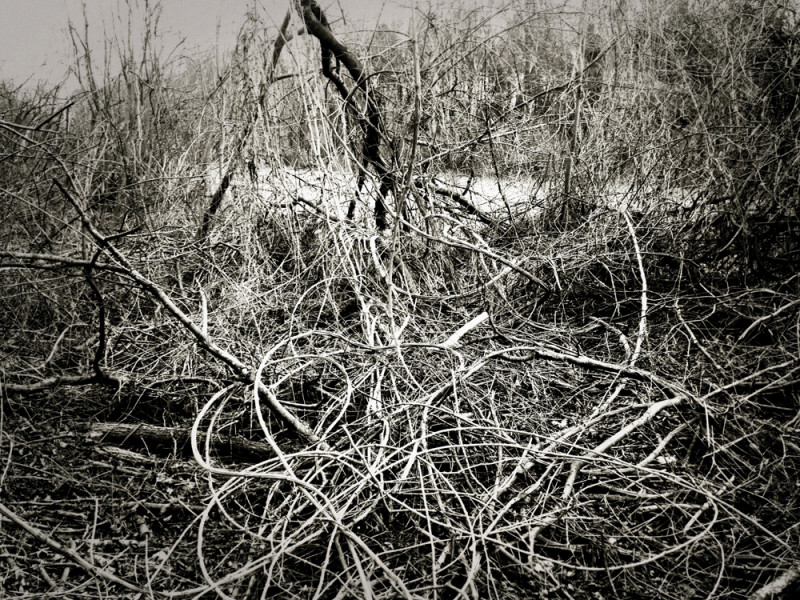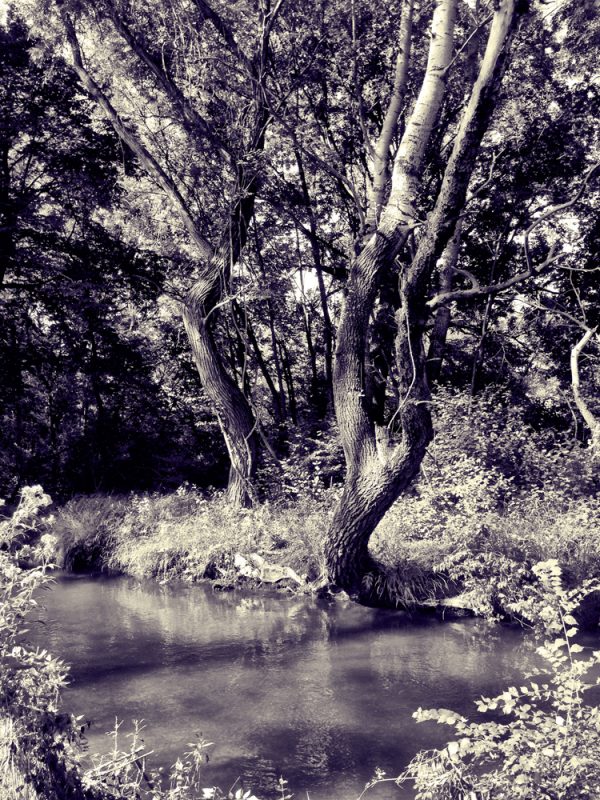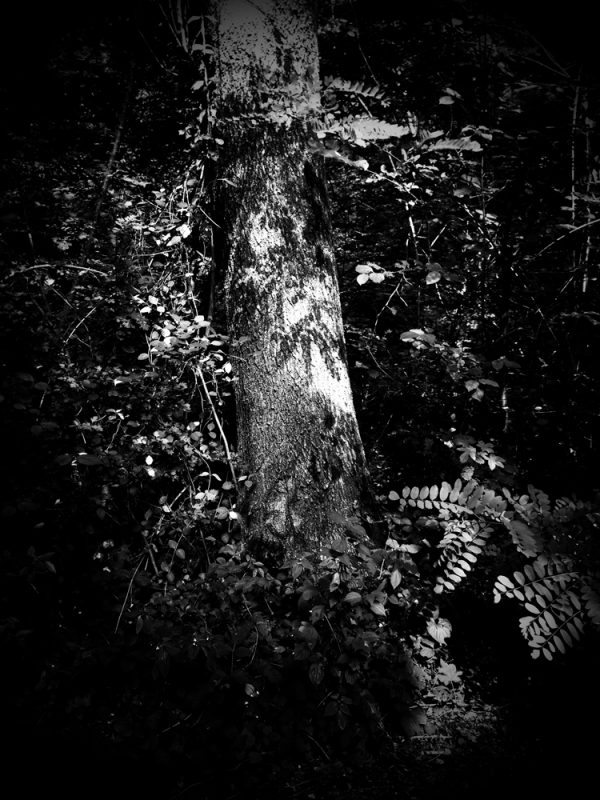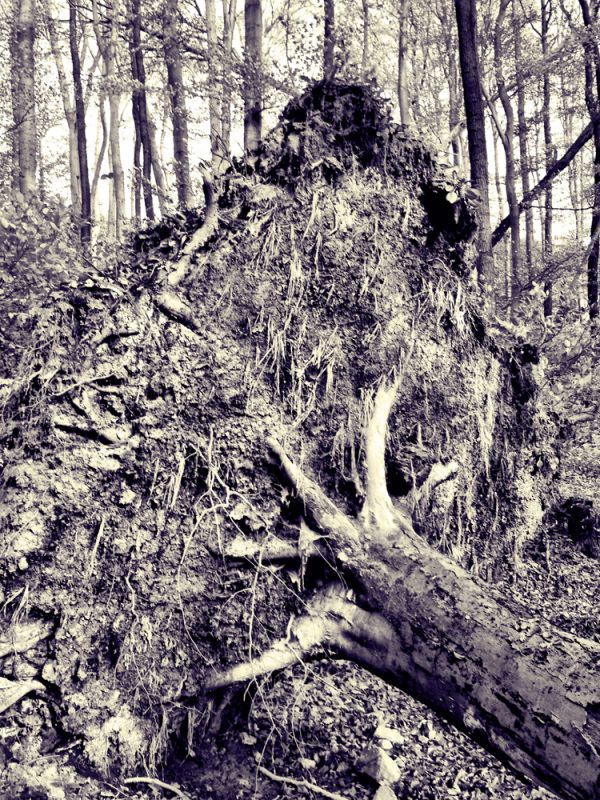Regina Anzenberger
Roots & Bonds
Book review by Gerry Badger
One subject that seems to have fallen out of favour in recent years – with professional photographers at least – is the natural landscape in the traditional sense, the Ansel Adams sense one might say. There seem to be two reasons for this. One is that it has become increasingly apparent that there is no such thing as a ‘natural’ landscape at all. As everything in the world, from the biosphere down to the tiniest microbe, has been affected by the hand – often the destructive hand – of man. As a result, much landscape photography today is ‘documentary’ in style – think of Edward Burtynsky, for instance – recording the devastation and framing an indictment. Being ultra positive and celebrating the landscape for its beauty – think of Sebastião Salgado – seems too operatic and redundant, almost hypocritical.
There is a formal redundancy at work, too. How do you photograph a rock or a tree or a sunset for the millionth time and find something fresh to say about it? But of course, there are exceptions, like the great Thomas Joshua Cooper, who has, almost single-handedly, preserved the tradition of the transcendental landscape photograph. He has done it in a postmodern way, but without neglecting the modernist approach, either. Cooper has added a conceptual approach, allied with contemporary cultural references, to make a landscape photography that extends the ‘grand’ tradition into the new millennium.
Now, Regina Anzenberger has done something different but equally interesting in her book Roots & Bonds. Anzenberger is the founder and director of the well-known Anzenberger Gallery and the force behind the Vienna Photobook Festival, which has rapidly become one of the better photo-festivals around. She is also a photographer in her own right as well as a painter, and Roots & Bonds combines photographs, paintings on photographs, and mixed media works – which, as those of you who know me know, I usually consider the first refuge of a scoundrel.
In her paintings-on-photographs and collages, however, Anzenbrger has found a language that is both true to, and compatible with the straight photographs in the book. The subject, or rather the subject-matter of her work is the woods near Vienna, not the Vienna Woods of Johann Strauss fame, which are a specific location, but woodland areas around the city. Most of the pictures were taken when she was out walking with her dog, Shakeera, near where she plays golf at Himberg.
Although Vienna is quite far south, forests, as they do in the culture of all German-speaking countries, hold a particular significance. In ancient times, much of northern Europe was covered in vast forests, home to the Teutonic tribes. It was in the Teutoburg forest, in AD 9, where the Romans suffered the most inglorious defeat in their history, when three whole legions, under the command of the Legate Varus, were annihilated, and, traumatically and symbolically, their eagle standards were taken. The Romans became entangled in the endless forests, and the German tribes were never conquered. So woodland represents a fortress and refuge for German speakers, a symbol of the Heimat (homeland). Anzenberger recounts that she began her project when she noticed a particular tree on one of her walks, a walk to which she returned again and again. “What especially fascinated me were the vines which elegantly wound themselves down to the ground from a branch, creating an image of endless bonds.”
Some fifteen or so pages into the book, this tree features in two single-image, double-page spreads. The first picture is a straight print in a sepia tone. In the second, featuring the same image, Anzenberger has delicately coloured the vines in reds and yellows, the whole tangle having the effect of a Jackson Pollock. This is the volume’s most overtly painted photograph. In others, the colouring or toning is much more subtle, sometimes even difficult to detect. And then there is a group of mixed media images where Anzenberger pastes a photograph on a page and extends the lines of the branches out with spidery drawn lines, often combined with collaged elements and handwritten texts.
If, in her mind, these bonds represent a comforting embrace, a sense of home, this is nevertheless not a cosy or comforting book. The vines are strangling the trees, and the forests, of course, are also the setting for all kinds of bad things, ranging from Grimm’s fairy tales to the lair of Fafner, the dragon in Wagner’s Ring. In Anzenberger’s distinctly spiky vision, there is a distinct air of nasty things lurking in the undergrowth. If she knocked her ball off the fairway into that, one suspects it would not be just the simple matter of a lost ball.
Her title, too, catches the distinctly double-edged feel of the work. Roots represent solidity, belonging, and continuity, the comforting sense of knowing where you have come from and where you are. Bonds – the ties that bind – potentially reflect the same idea, but can also mean constraint, suffocation, and restriction. As Robert Adams famously noted, landscape photography can reflect a number of things – place, the artist’s life, metaphor and symbol. In Roots & Bonds, Regina Anzenberger has given us what might be termed the psychological landscape – comfortingly familiar yet also edgy, distinctly uncomfortable but distinctly interesting. ♦
All images courtesy of the artist. © Regina Anzenberger
—
Gerry Badger is a photographer, architect and photography critic of more than 30 years. His published books include Collecting Photography (2003) and monographs on John Gossage and Stephen Shore, as well as Phaidon’s 55s on Chris Killip (2001) and Eugene Atget (2001). In 2007 he published The Genius of Photography, the book of the BBC television series of the same name, and in 2010 The Pleasures of Good Photographs, an anthology of essays that was awarded the 2011 Infinity Writers’ Award from the International Center of Photography, New York. He also co-authored The Photobook: A History, Vol I, II and III with Martin Parr.

